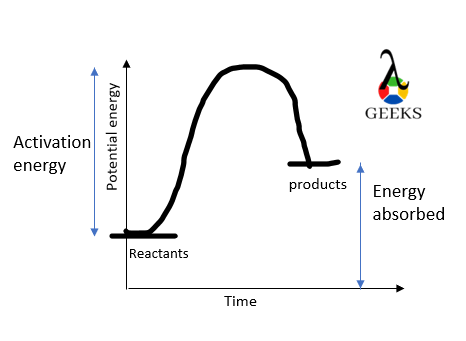H2SO3 + Ca is composition of inorganic and organic compound. Reaction between weak acid H2SO3 and solid metal Ca, are as follows
H2SO3 is commonly called as sulphurous acid, a mild acid used as an intermediate in industries, acts as good disinfectants. Ca is silvery-white luster, soft metal, act as a good reducing agent in many reactions. The skeleton releases Ca2+ ions and serves as a significant mineral storage location for the element.
In this article, let us discuss the chemical reaction between H2SO3 and Ca leading to products, its conjugate pair, with equation in its balanced form.
What is the product of H2SO3and Ca
H2SO3 reacts with Ca to produce calcium salt of sulfites along with the liberation of hydrogen gas.
H2SO3 + Ca → CaSO3 + H2
What type of reaction is H2SO3+ Ca
H2SO3 + Ca is single displacement reaction. It is a type of oxidation-reduction chemical process that occurs when an ion or element travels out of a molecule, replacing one element with another.
How to balance H2SO3+ Ca
For the given reaction:
H2SO3 + Ca → CaSO3 + H2
- We have to assign alphabetical coefficients on both side of reactions.
- A H2SO3 + B Ca→ C CaSO3 + D H2
- Expressed coefficients are used to represent, compounds in given reaction.
- H = 2A + 2D, S = A+C, O = 3A+3B+3C, Ca = B+C
- Substitute the coefficient values into the elimination method for estimation and verify the result.
- A=1, B=1, C=1, D=1, E=1
- However, there is equal number of both reactants and product are present in reaction, it is already in its balanced state.
- H2SO3 + Ca → CaSO3 + H2
H2SO3+ Ca titration
H2SO3 + Ca will not show titration. H2SO3 being weak acid cannot undergo titration with Ca metal. If we take Aqueous solution of calcium, then it will show redox titration with help of phenolphthalein indicator.
H2SO3+ Ca net ionic equation
Net ionic equation, for H2SO3 + Ca reaction is
H2SO3 + Ca → CaSO3 + H2
- A molecular equation should be balanced, including the phase of every compound.
- H2SO3 (Aq) + Ca (S) → CaSO3 (S) + H2 (g)
- The aqueous salts or chemicals in the equation must be converted into ions.
- Only the powerful electrolytes should be broken down because they can totally dissociate.
- Here, in this reaction, salt CaSO3 and metal calcium does no undergo dissociation.
- H2SO3 being weak acid, do not dissociate.
- Therefore, net ionic equation will remain as it is.
H2SO3 + Ca conjugate pairs
H2SO3 + Ca has the following conjugate pairs,
- In H2SO3, after donating its H+ ion, the resulting compound is HSO3–, act as a conjugate base.
- While calcium is solid metal, doesn’t constitute any conjugate pair.
H2SO3+ Ca intermolecular forces
H2SO3 + Ca has the following intermolecular forces,
- The covalent compound H2SO3 exhibits van der Waals forces of attraction. Due to presence of sheer modest electrostatic forces of attraction within the molecule.
- H2 consists of weak London dispersion forces because electrons are randomly distributed between both hydrogen atoms.
- CaSO3 have electrostatic forces of attraction, due to its ionic nature.
- Strong cohesive forces are present in Ca because of presence of spontaneous moment of delocalized electrons, throughout the lattice.
H2SO3 + Ca reaction enthalpy
H2SO3 + Ca reaction enthalpy is 831.62 KJ/Mol. The enthalpy of corresponding molecules is shown in table as follows.
| Compound | ΔH( KJ/Mol ) |
|---|---|
| H2SO3 | -814.4 KJ/Mol |
| CaSO3 | 17.22 KJ/Mol |
- However, standard enthalpy of formation of Ca and H2 molecule is 0 KJ/Mol.
- Enthalpy change for reaction between H2SO3 + Ca, Calculated by these formulae.
- Change in enthalpy = addition of enthalpies of formation of product – addition of enthalpies of formation of reactant.
- Enthalpy change = [(17.22) – (-814.4)]
= 831.62 KJ/Mol.
Is H2SO3+ Ca a buffer solution
H2SO3 + Ca is a buffer solution. Sulfurous acid is weak acid along with the formation of calcium salt of sulfites, on course of reaction gives buffer solution.
Is H2SO3+ Ca a complete reaction
H2SO3 + Ca is not complete reaction. H2SO3 being weak acid cannot undergo 100% dissociation, thus ions remain in solution. Excess amount of reactant remains in solution.
Is H2SO3+ Ca an exothermic or endothermic reaction
H2SO3 + Ca is an endothermic reaction. That shows absorption of heat from system or surrounding takes place during course of reaction. This reaction has been carried forward, leading to formation of product.

H2SO3+ Ca a redox reaction
H2SO3 + Ca is good example of redox reaction. Oxidation and reduction take place simultaneously resulting in change in oxidation state of both reactant and product molecules.
Is H2SO3+ Ca a precipitation reaction
H2SO3 + Ca gives precipitation reaction. H2SO3 reacts with Ca to form CaSO3, gives white solid precipitate that is insoluble in water, but soluble in acid because of general tendency of carbonates to combine with metal of 2nd group to give insoluble precipitate in water.
Is H2SO3 + Ca reversible or irreversible reaction
H2SO3 + Ca is irreversible reaction. Formation of calcium sulfite salt leads to white precipitate, thus reaction cannot be revert back forming reactant.
Is H2SO3 + Ca a displacement reaction
H2SO3 + Ca is single displacement reaction. It is a chemical reaction where one reactant is exchanged for one ion of a second reactant, such displacement occurs, leading to different compound called as product.
Conclusion
Reaction between weak acid and base results in salt formation, making reaction irreversible in nature. It is a good example of acidic buffer solution. Formation of precipitate on course of reaction takes place. Calcium sulfite act as a remediation, agricultural fertilizers, dressings and in preservation of food supplements.

Hello ….I am Sana Khan. A master’s student in organic chemistry from Nagpur University. I want to share my knowledge by publishing articles.